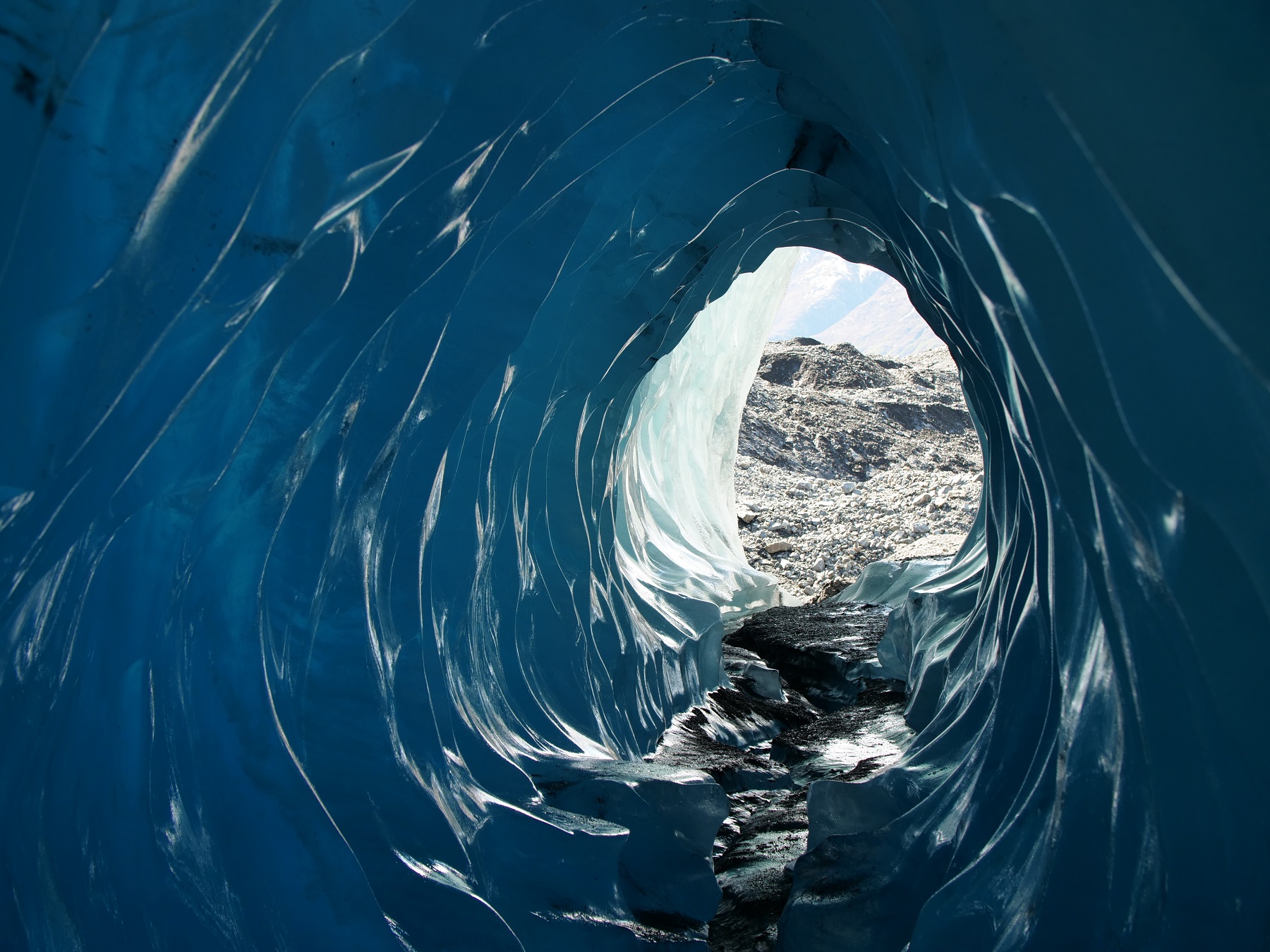Glacier Moulins

Moulins
French Influence
Moulin, a French word for “mill”, are vertical rivers that serve as a glacier’s internal plumbing system. They carry water out of the glacier by meltwater streams and lakes formed on the surface of

Meltwater moves over the surface of the ice, finding the pathway of least resistance.
the ice. These shafts provide a pathway for water to travel from the glacier’s surface to it’s ground level. Similar to how rainwater erodes the bedrock on the Earth’s crust to form sinkholes, summer meltwater on a glacier’s surface erodes ice and creates moulins.
The warmer temperatures during summer create lakes and streams on the surface of the glacier. This water then drains, following the path of least resistance. Eventually these streams will find a crevasse or other weak spot in the ice and begin to pour down into the ice. As the water moves downward, its turbulence and heat will erode a vertical shaft that can go all the way down to the bottom of the glacier. This can be hundreds of feet deep.
Moulin Movements
Given enough water flow, a moulin can easily form over the course of a few weeks or even days. All this water from these drainage systems influence the speed at which a glacier moves. Eventually all

Looking out from water had drilled laterally through the ice, leaving behind an ice cave.
the flowing water will exit the glacier at its base, where it acts like a lubricant between the ice and the bedrock. The melting water accelerates the glacier’s flow in summer. This allows the Matanuska to flow up to one foot per day.
Once formed, the shaft will stay open as long as meltwater is flowing. In winter, as the water freezes, the moulin will begin to fill up with ice and snow and close up. Moulins often occur in the same spot for multiple years. However, the spot will continue to move forward with the flow of the ice. As the surface of the glacier continues to melt, these large drainages will work their way to the surface eventually.
So if you ever find yourself traversing the ice, be sure to keep an eye out for moulins. Some are small wonders to peer into and imagine the intricacy within. Others, will astound you with their immensity and grandeur. Either way, with the help of meltwater, the moulin world is always changing.
Written By: Quinn Zinkievich
